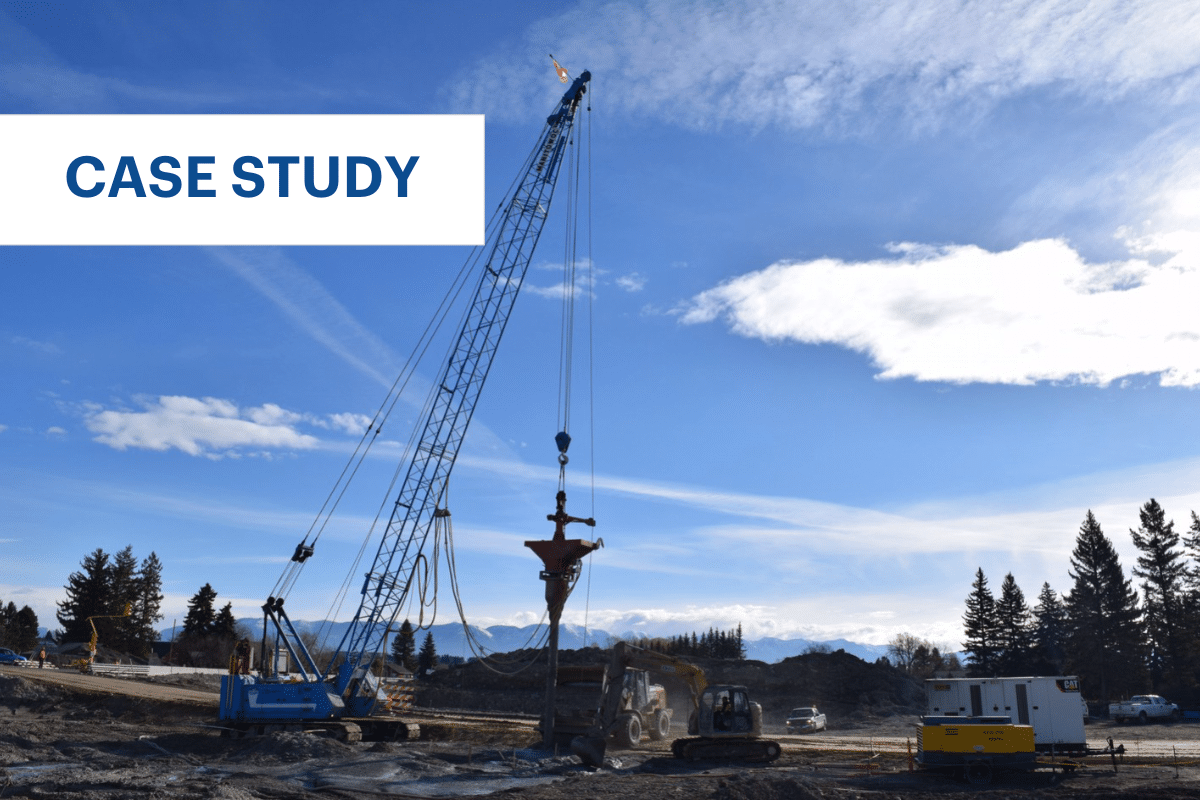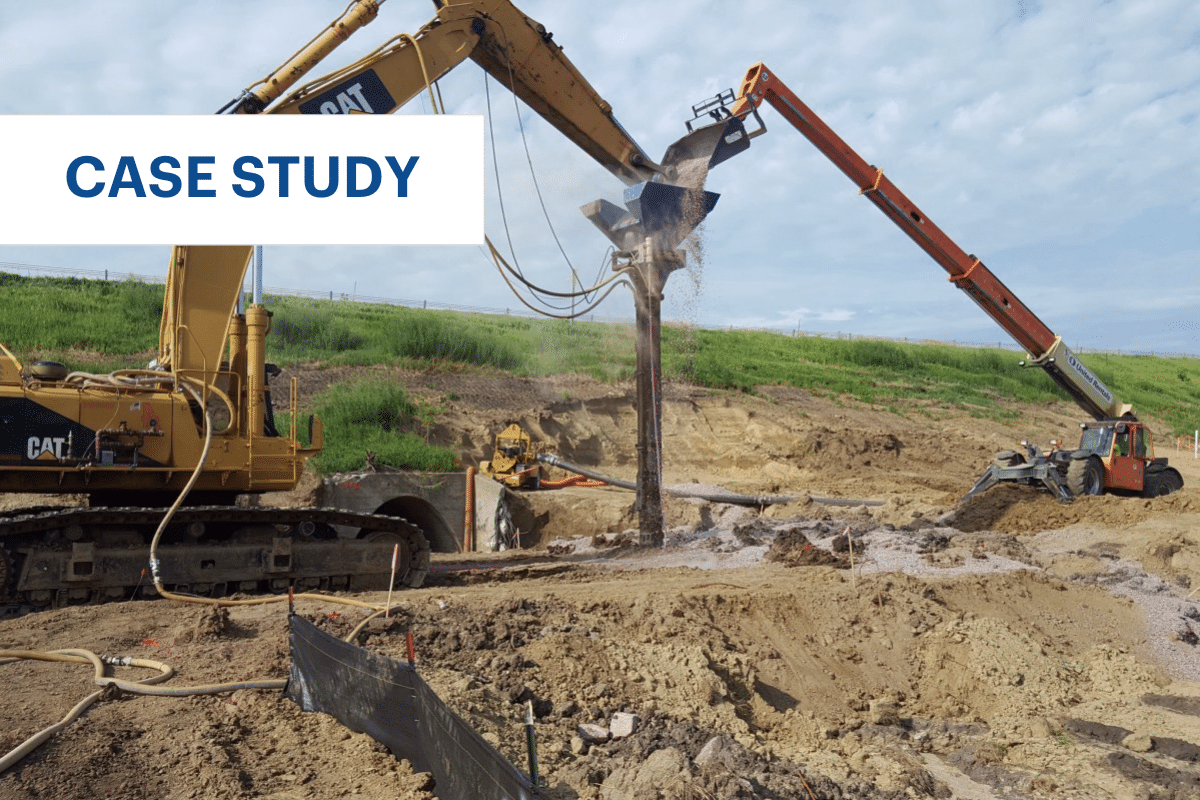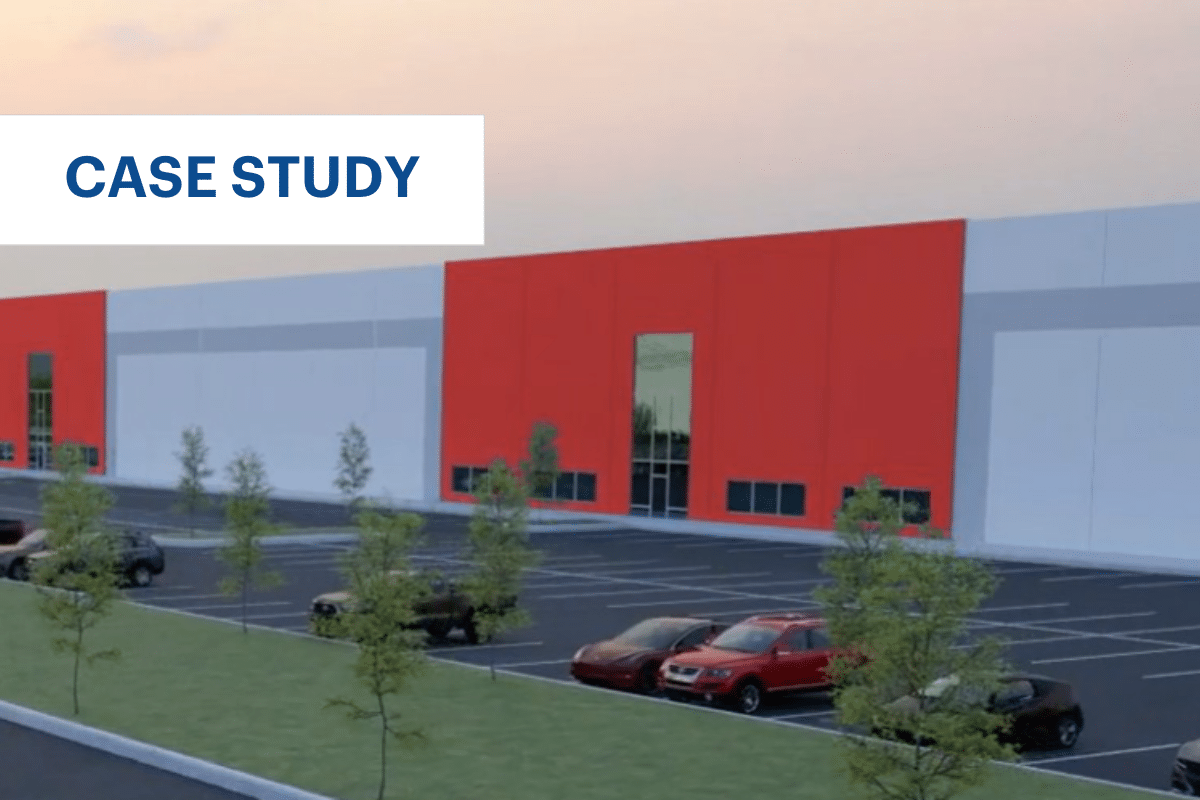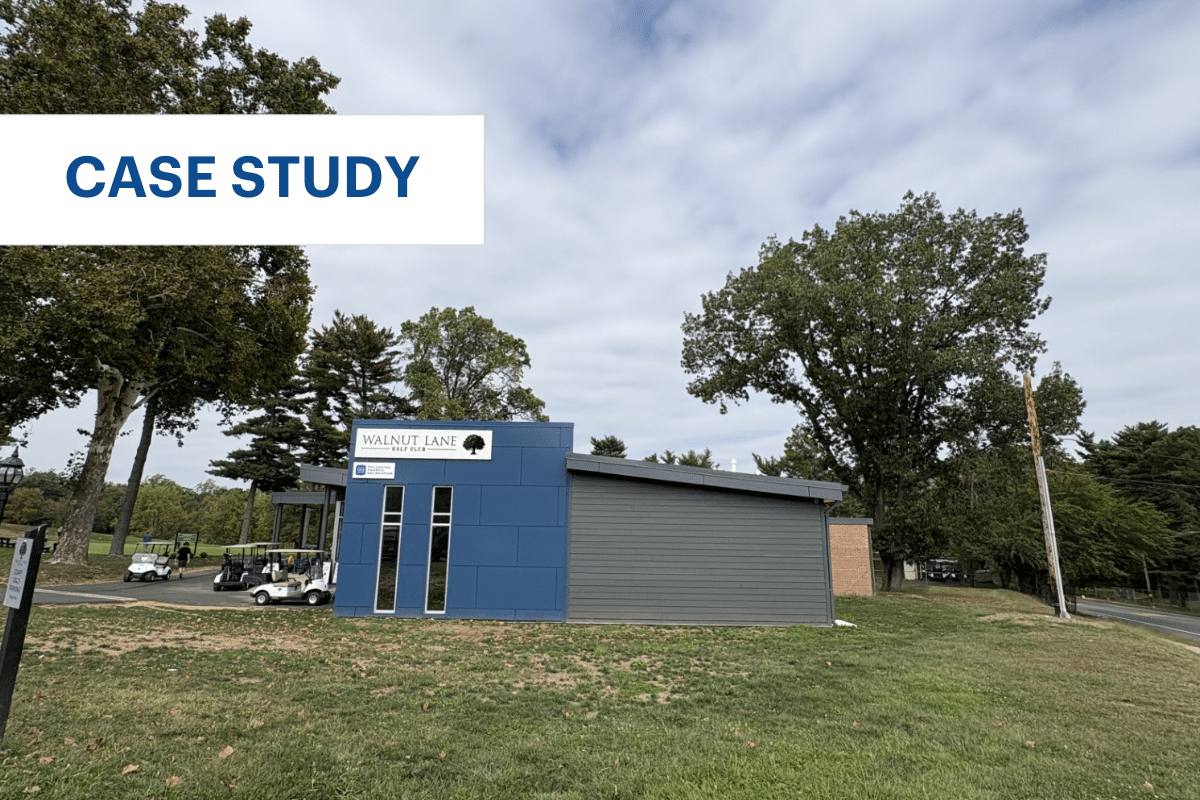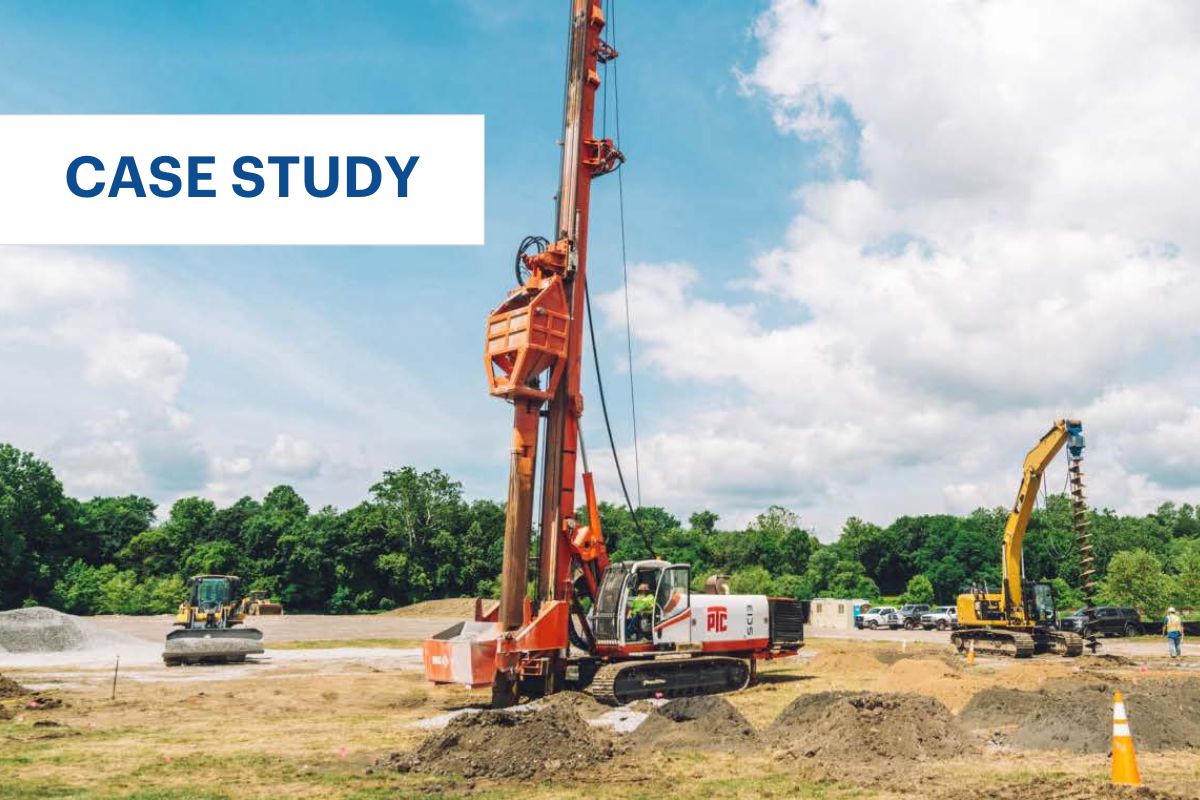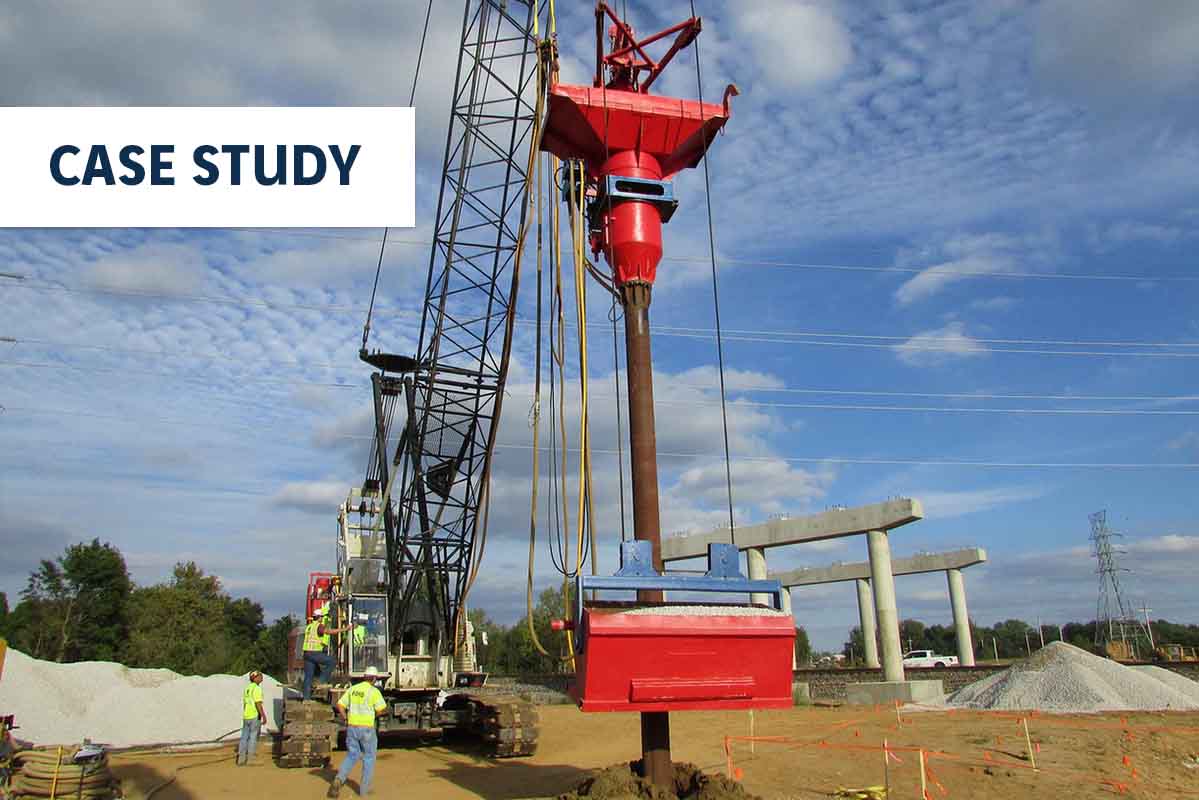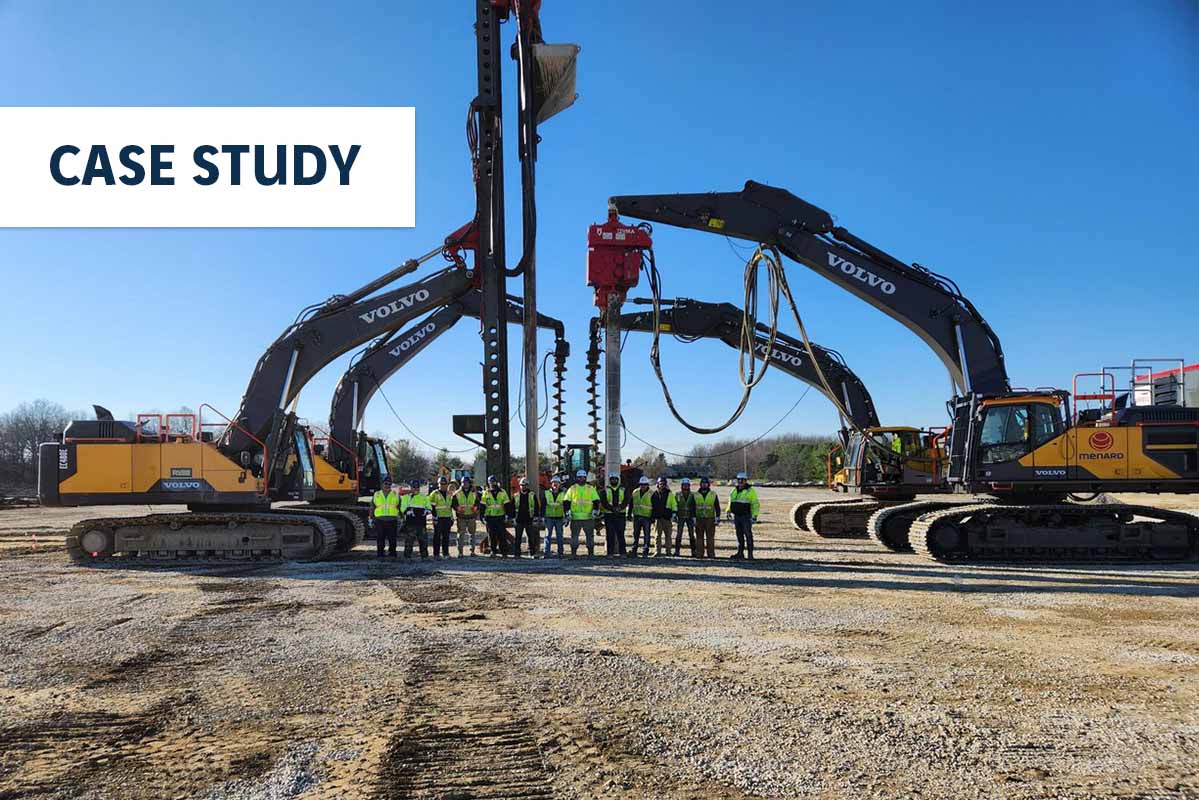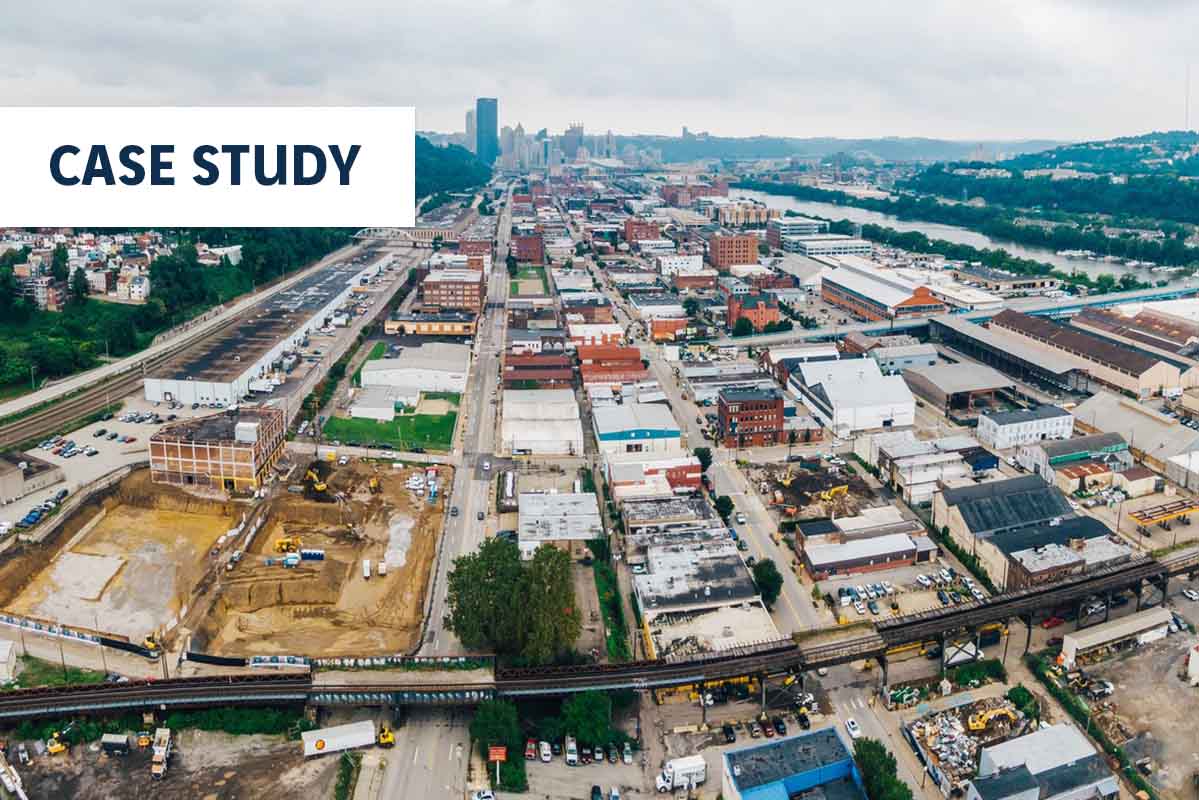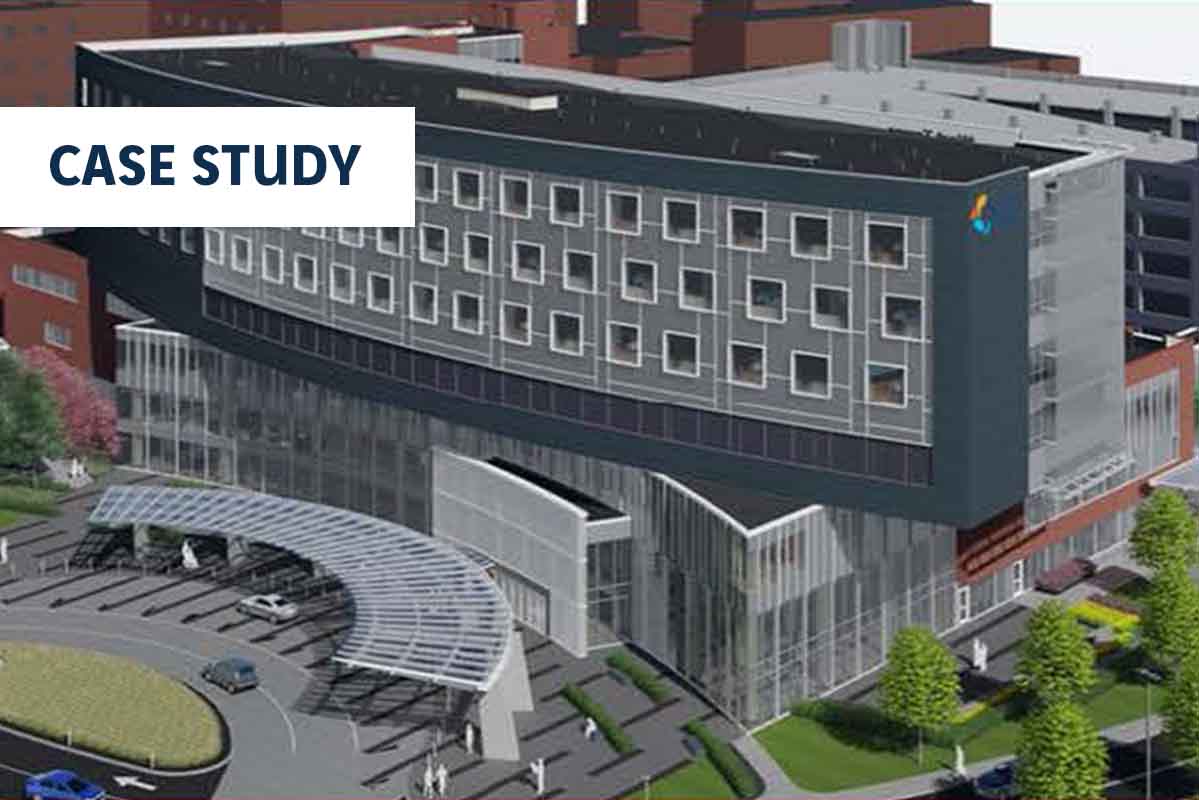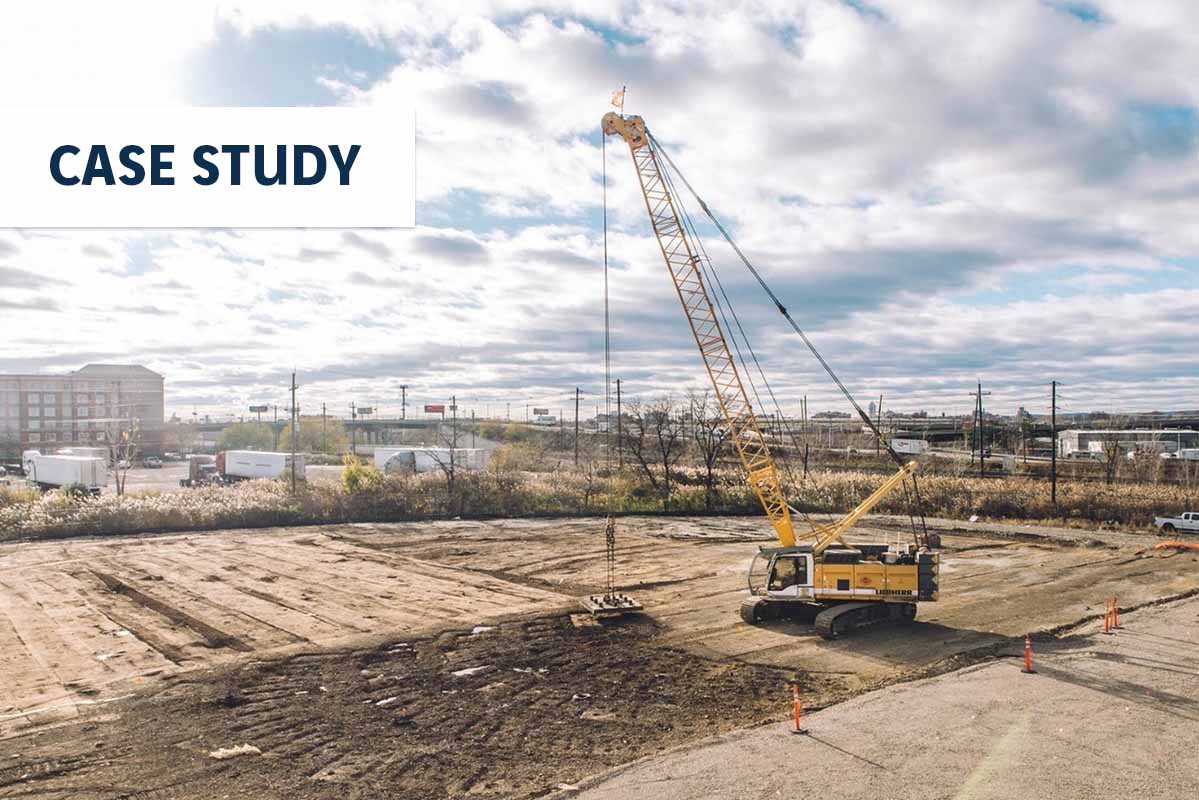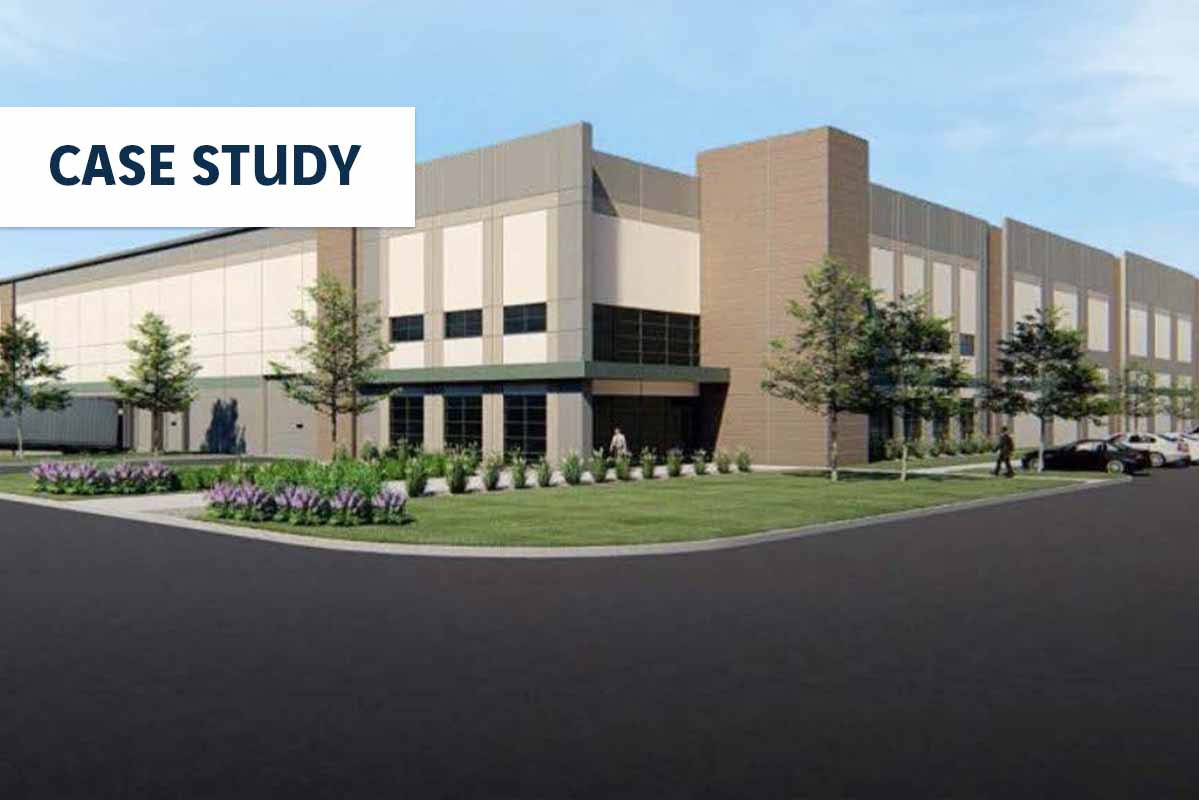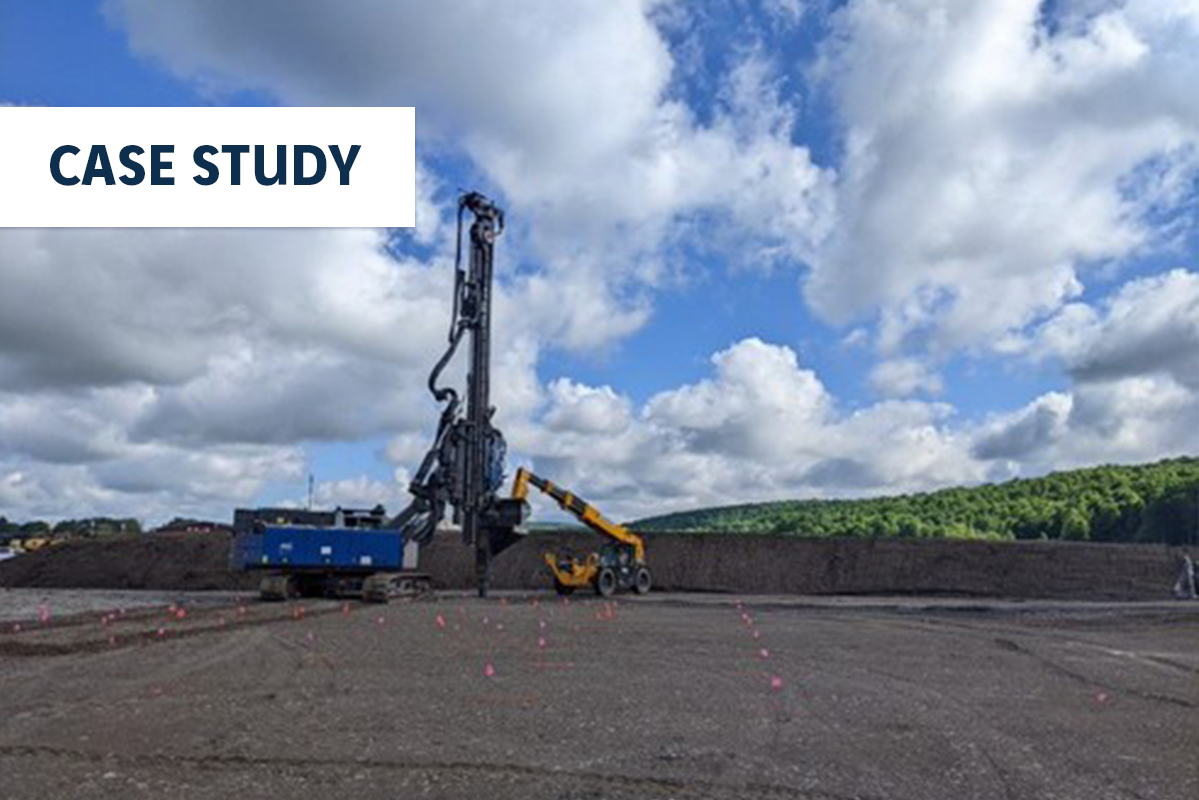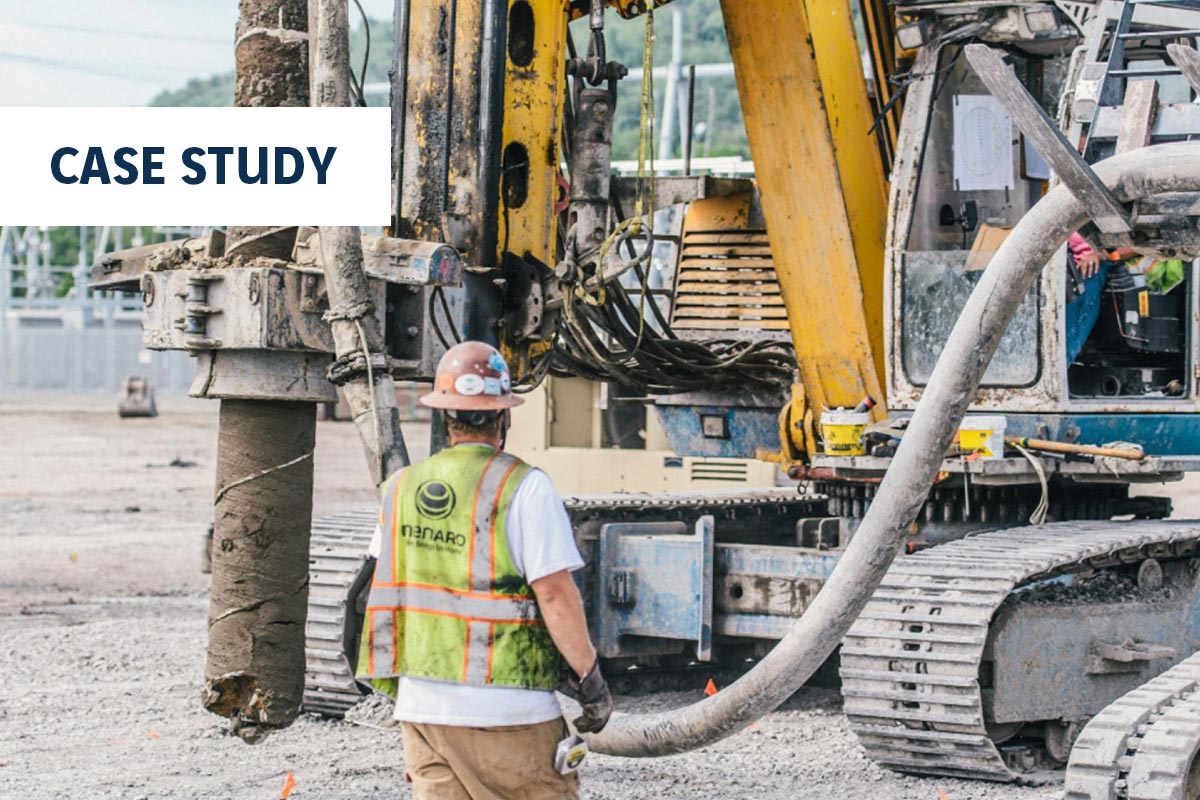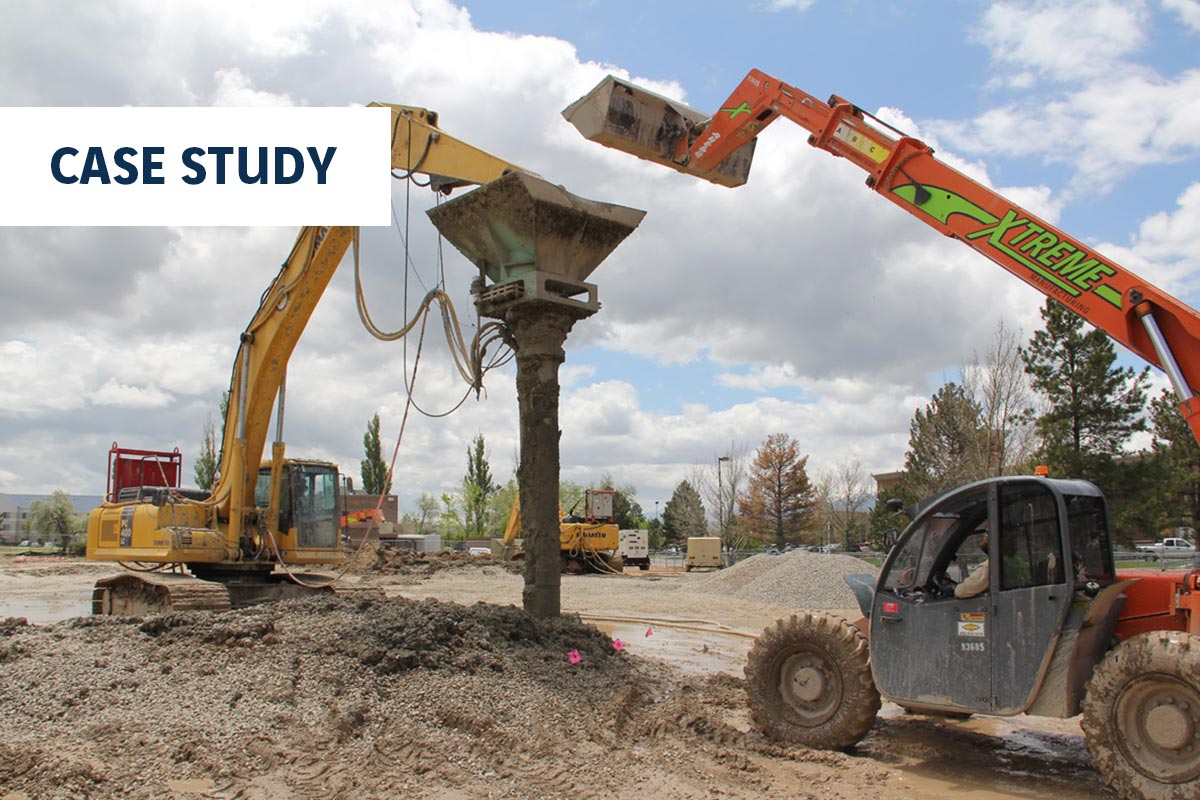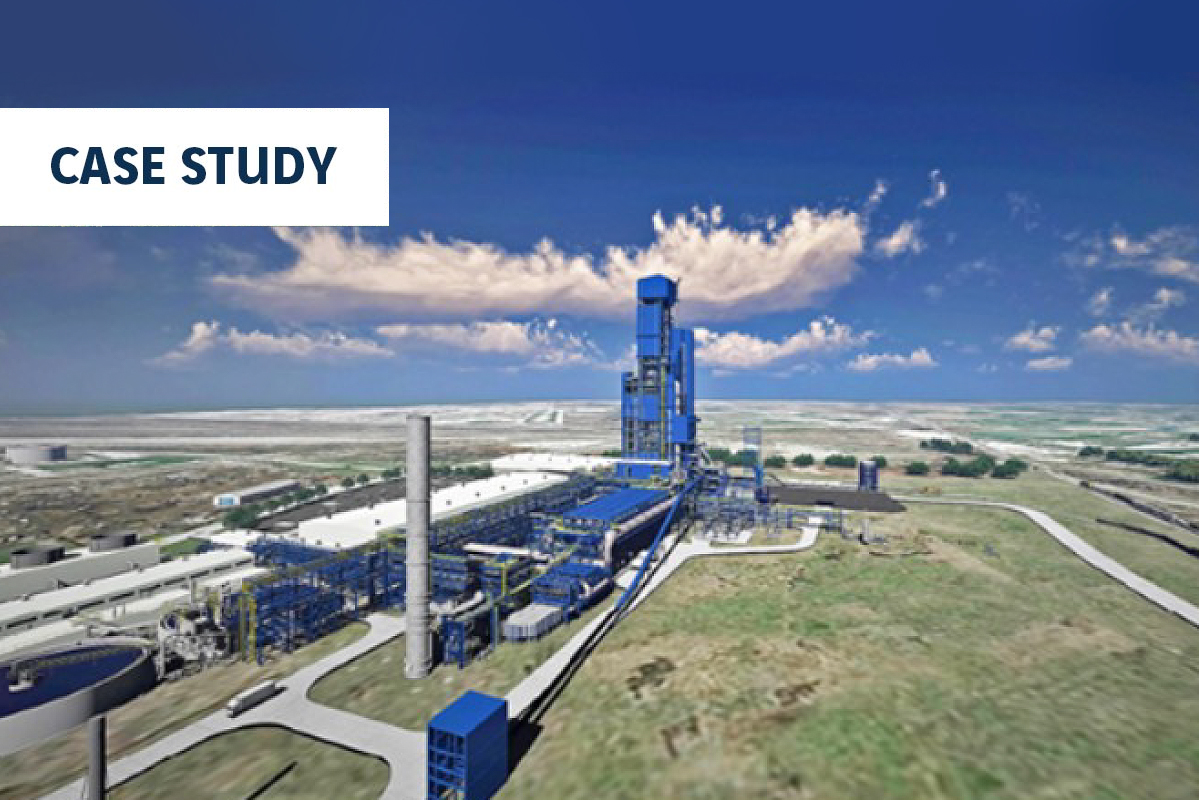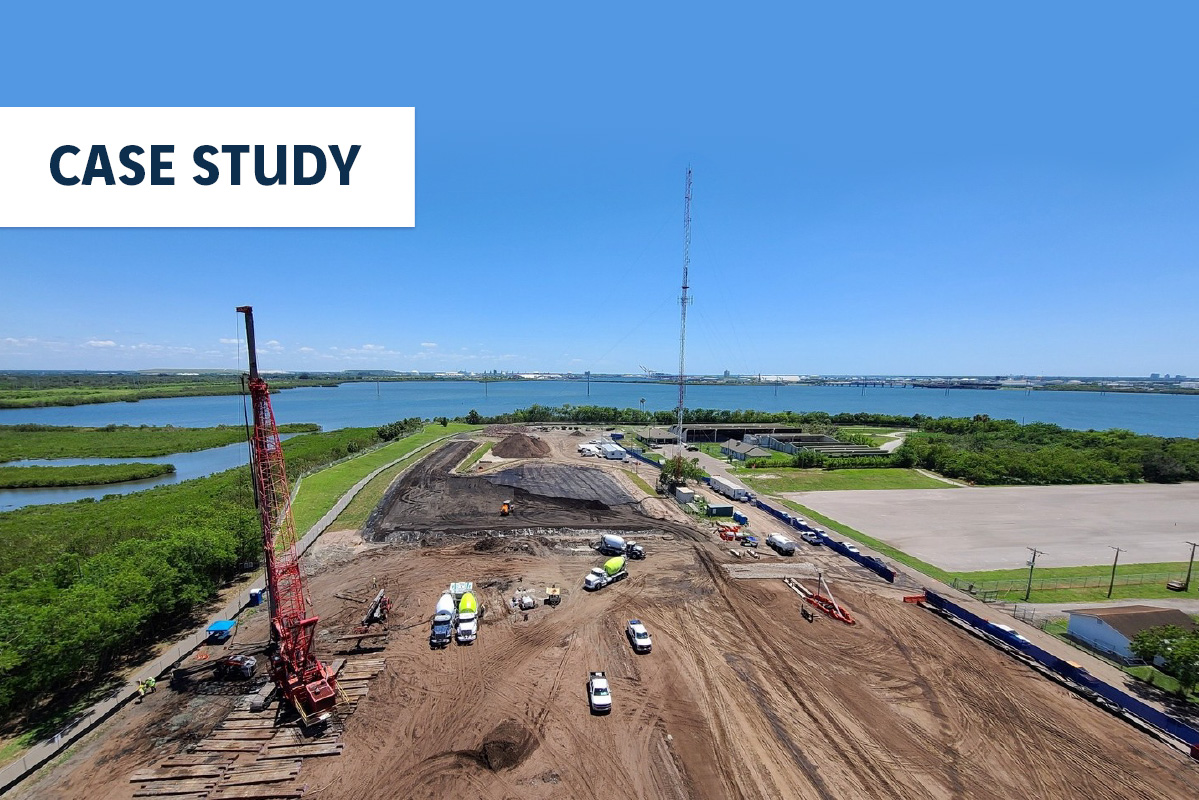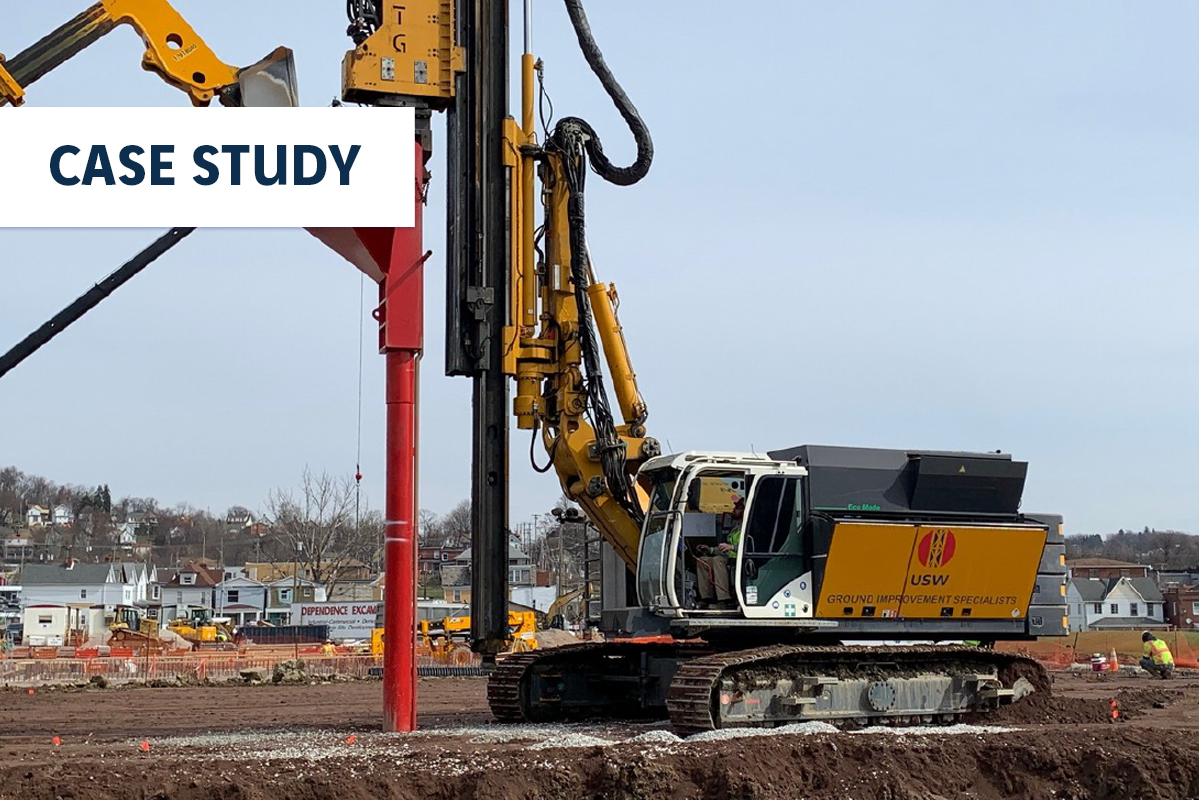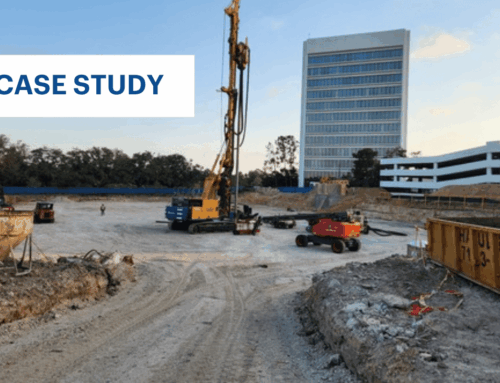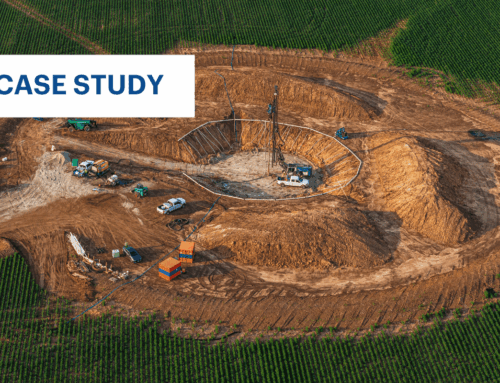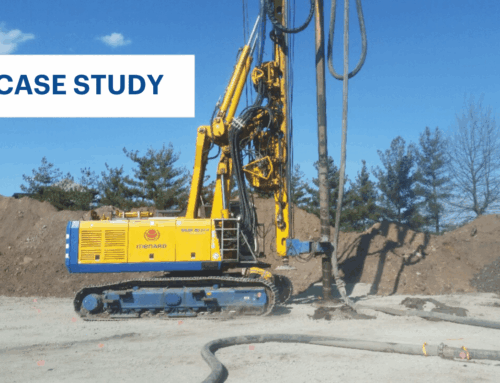Stone columns are continuous columns of compacted aggregate that are typically formed using a vibratory probe or ramming probe to create vertical inclusions of high stiffness, shear strength and improved drainage characteristics.
Stone columns typically range in diameter between 18 and 42 inches. When a vibratory probe is used to form the hole in which the stone column is constructed, the elements are referred to as vibro stone columns or vibratory stone columns. If separate drilling equipment is used to create the hole in which the stone is placed, then the elements are commonly referred to as aggregate piers.

Key Elements
WHAT THEY ARE:
Columns of compacted granular material are installed to increase the stiffness of fine-grained soils or to densify coarse-grained soils.
HOW THEY WORK:
Formed by inserting a vibratory probe into the soil, backfilling the void created with stone in approximately 2-foot thick lifts up to the ground surface – each lift is compacted by reinserting the vibratory probe into the stone, with the process repeated until adequate compaction and required column size is achieved. The network of stone columns reinforces the surrounding soil improving its overall characteristics.
WHY WE USE THEM:
Reduce long-term settlement, expedite consolidation settlement, increase shear strength and bearing capacity and mitigate the risk of liquefaction.
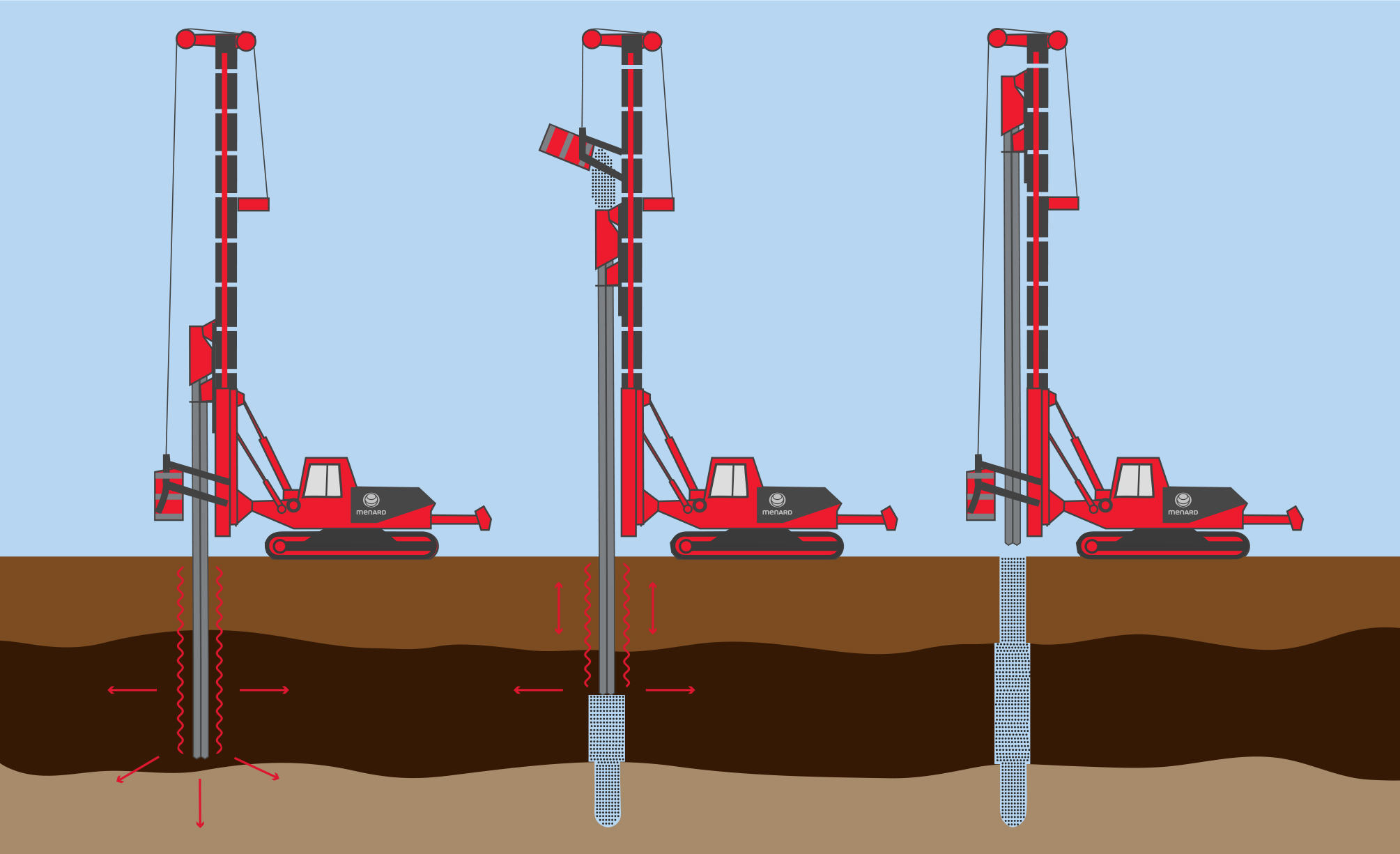
Stone columns are columns of compacted aggregate that are used to enhance shear capacity, reduce settlement, increase bearing capacity and mitigate liquefaction.


